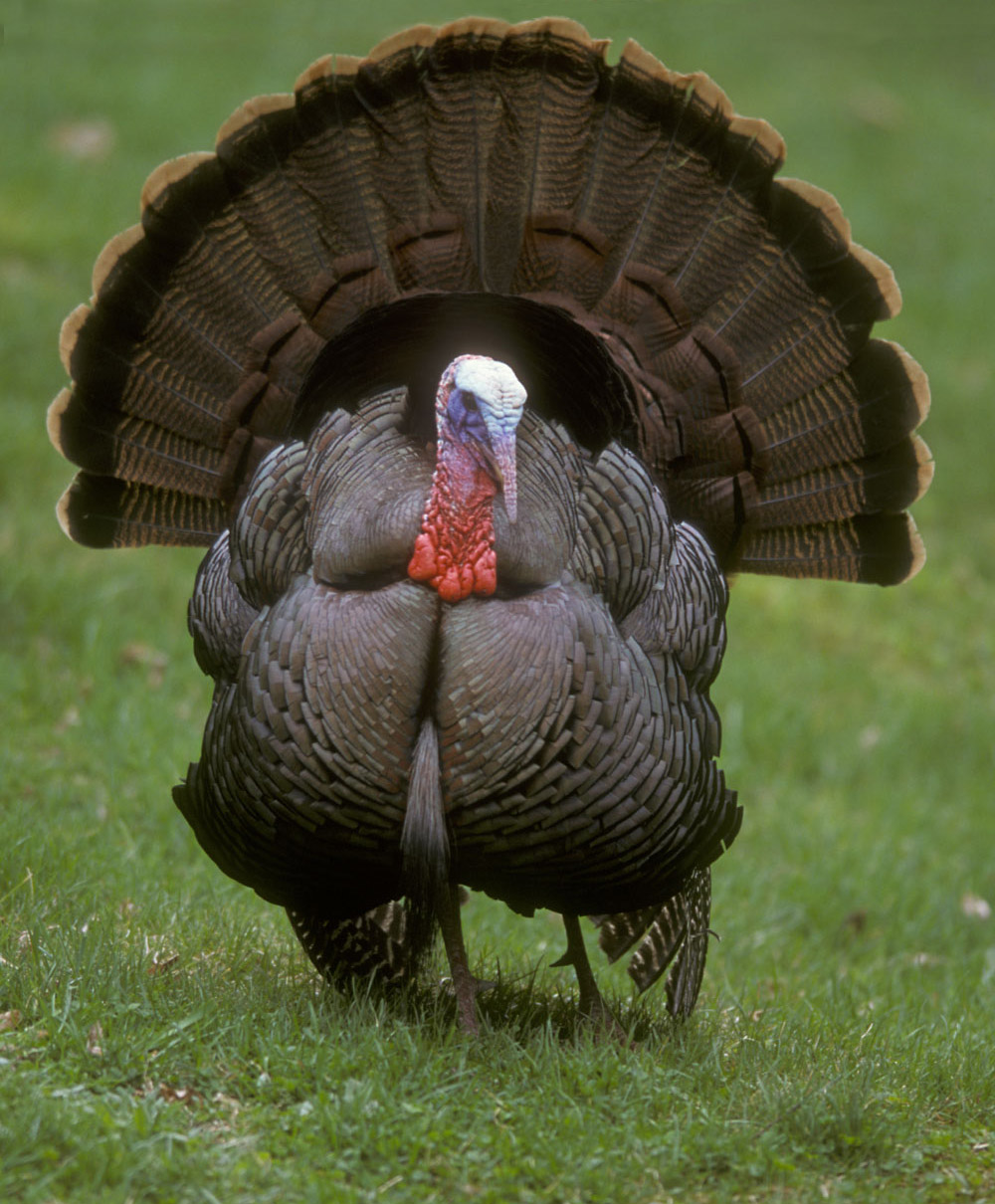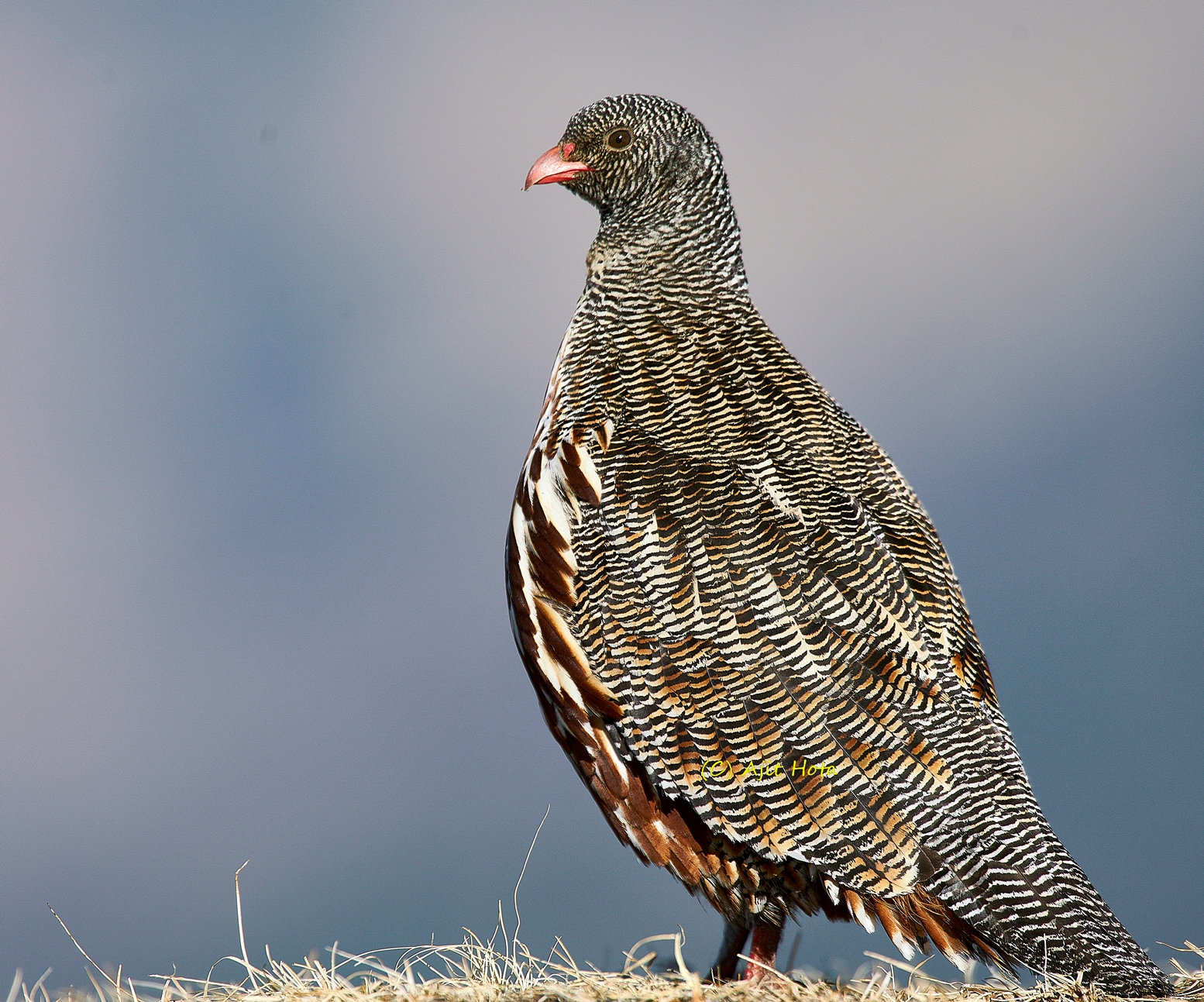|
Lerwa
The snow partridge (''Lerwa lerwa'') is a gamebird in the pheasant family Phasianidae found widely distributed across the high-altitude Himalayan regions of Pakistan, China, India and Nepal. It is the only species within its genus, and is thought to be the most basal member of the "erectile clade" of the subfamily Phasianinae. The species is found in alpine pastures and open hillside above the treeline but not in as bare rocky terrain as the Himalayan snowcock and is not as wary as that species. Males and females look similar in plumage but males have a spur on their tarsus. Description This partridge appears grey above and chestnut below with bright red bill and legs and the upperparts finely barred in black and white. In flight the pattern of dark brown primaries and secondaries with a narrow trailing white margin make them somewhat like the much larger Tibetan snowcock. The 14-feathered tail is dark and barred in white. There is variation in the shade and some birds have ... [...More Info...] [...Related Items...] OR: [Wikipedia] [Google] [Baidu] |
Gamebird
Galliformes is an order of heavy-bodied ground-feeding birds that includes turkeys, chickens, quail, and other landfowl. Gallinaceous birds, as they are called, are important in their ecosystems as seed dispersers and predators, and are often reared by humans for their meat and eggs, or hunted as game birds. The order contains about 290 species, inhabiting every continent except Antarctica, and divided into five families: Phasianidae (including chicken, quail, partridges, pheasants, turkeys, peafowl (peacocks) and grouse), Odontophoridae (New World quail), Numididae (guinea fowl), Cracidae (including chachalacas and curassows), and Megapodiidae (incubator birds like malleefowl and brush-turkeys). They adapt to most environments except for innermost deserts and perpetual ice. Many gallinaceous species are skilled runners and escape predators by running rather than flying. Males of most species are more colorful than the females, with often elaborate courtship behav ... [...More Info...] [...Related Items...] OR: [Wikipedia] [Google] [Baidu] |
Phasianidae
Phasianidae is a family (biology), family of heavy, ground-living birds, which includes pheasants, grouse, partridges, junglefowl, chickens, Turkey bird, turkeys, Old World quail, and peafowl. The family includes many of the most popular Game (hunting), gamebirds. The family includes 185 species divided into 54 genera. It was formerly broken up into two subfamily (biology), subfamilies, the Phasianinae and the Perdicinae. However, this treatment is now known to be paraphyly, paraphyletic and polyphyly, polyphyletic, respectively, and more recent evidence supports breaking it up into two subfamilies: Rollulinae and Phasianinae, with the latter containing multiple Tribe (biology), tribes within two clades. The New World quail (Odontophoridae) and guineafowl (Numididae) were formerly sometimes included in this family, but are now typically placed in families of their own; conversely, grouse and turkey (bird), turkeys, formerly often treated as distinct families (Tetraonidae and Melea ... [...More Info...] [...Related Items...] OR: [Wikipedia] [Google] [Baidu] |
Kedarnath Wildlife Sanctuary
Kedarnath Wild Life Sanctuary, also called the Kedarnath Musk Deer Sanctuary, is a wildlife sanctuary declared under Wildlife Protection Act, 1972 and located in Uttarakhand, India. Its alternate name comes from its primary purpose of protecting the endangered Himalayan musk deer. Consisting of an area of , it is the largest protected area in the western Himalayas.It is famous for alpine musk deer, Himalayan Thar, Himalayan Griffon, Himalayan Black bear, Snow Leopard and other flora park and fauna. It is internationally important for the diversity of its flora and fauna (particularly of ungulate species). Located in the Himalayan Highlands with an elevation ranging from (near Phata) to the Chaukhamba peak at , it was a notified reserve forest between 1916 and 1920. It was changed to a sanctuary on 21 January 1972, and has been designated a "Habitat/Species Management Area" by the IUCN. The sanctuary straddles a geographically diverse landscape and transitional environment. I ... [...More Info...] [...Related Items...] OR: [Wikipedia] [Google] [Baidu] |
Phasianinae
The Phasianinae (Thomas Horsfield, Horsfield, 1821) are a subfamily (biology), subfamily of the pheasant family (Phasianidae) of landfowl, the order (biology), order Galliformes. The subfamily includes true pheasants, tragopans, grouse, Turkey (bird), turkey and similar birds. Although this subfamily was considered Monophyly, monophyletic and separated from the partridges, francolins, and Old World quails (Perdicinae) until the early 1990s, Molecular phylogenetics, molecular phylogenies have shown that this placement is paraphyletic. For example, some partridges ''(''genus ''Perdix'') are more closely affiliated to pheasants, whereas Old World quails and partridges from the genus ''Alectoris'' are closer to junglefowls. There are two clades in the Phasianinae: the erectile clade and the non-erectile clade, referring to erectile tissue in the non-feathered parts of the face. Both clades are believed to have diverged during the early Oligocene, about 30 million years ago. The P ... [...More Info...] [...Related Items...] OR: [Wikipedia] [Google] [Baidu] |
Bhutia
The Bhutias (exonym; Nepali: भुटिया, "People from Tibet") or Drejongpas (endonym; , THL: dre-jong pa, "People of the Rice Valley") are a Tibetan ethnic group native to the Indian state of Sikkim who speak Drejongke, a Tibetic language which descends from old Tibetan. The majority of Bhutias live in Sikkim, while a significant number also reside in the Darjeeling and Kalimpong districts of northern West Bengal and in countries such as Nepal and Bhutan. Language The language spoken by the Bhutias of Sikkim is Drejongke, a Tibetic language which has a lexical similarity of 65% with Dzongkha, the language of Bhutan. By comparison, Drejongke is only 42% lexically similar with Standard Tibetan. Sikkimese has also been influenced to some degree by the neighboring Yolmo and Tamang languages. History Migration from Tibet to Sikkim in small numbers occurred since the 8th century. However, the 13th century saw an increase in migrations as many clans came with Gy ... [...More Info...] [...Related Items...] OR: [Wikipedia] [Google] [Baidu] |
Tibetan Snowcock
The Tibetan snowcock (''Tetraogallus tibetanus'') is a bird in the pheasant family Phasianidae of the order Galliformes, gallinaceous birds. This species is found in high-altitude regions of the Western Himalayas and the Tibetan Plateau, where it overlaps in part with the larger Himalayan snowcock. The head is greyish and there is a white crescent patch behind the eye and underside is white with black stripes. In flight the secondaries show a broad white trailing edge. Description Smaller than Himalayan snowcock, this species has a grey head and neck with a white patch behind the eye and above the dark cheek. Chin, throat and breast are white, with two grey bands on the breast. Grey wing coverts and tertials have a white trim. The secondaries have a broad white trailing edge that forms a wing band. Underparts are white with black streaks on flanks and belly. The tail is rufous brown and the undertail coverts are black. Legs and beaks are reddish. Sexes are similar, but female h ... [...More Info...] [...Related Items...] OR: [Wikipedia] [Google] [Baidu] |
Blood Pheasant
The blood pheasant (''Ithaginis cruentus'') or blood partridge is a galliforme bird in the pheasant family Phasianidae and the only species in the genus ''Ithaginis''. It is a relatively small, short-tailed pheasant that is widespread in the lower Himalayas ranging across North and East India, Nepal, Bhutan, South China and northern Myanmar. It has been classified as Least Concern on the IUCN Red List since 2009, and the global blood pheasant population is thought to be stable. The blood pheasant is the state bird of Sikkim, India. Description The blood pheasant has the size of a small fowl, about in length with a short, convex, very strong black bill, feathered between bill and eye, and a small crest of variously coloured feathers. The colour of the plumage above is dark ash, with white shafts, the coverts of the wings various tinged with green, with broad strokes of white through the length of each feather, the feathers of the chin deep crimson; on the breast, belly, an ... [...More Info...] [...Related Items...] OR: [Wikipedia] [Google] [Baidu] |
Sichuan
Sichuan is a province in Southwestern China, occupying the Sichuan Basin and Tibetan Plateau—between the Jinsha River to the west, the Daba Mountains to the north, and the Yunnan–Guizhou Plateau to the south. Its capital city is Chengdu, and its population stands at 83 million. Sichuan neighbors Qinghai and Gansu to the north, Shaanxi and Chongqing to the east, Guizhou and Yunnan to the south, and Tibet to the west. During antiquity, Sichuan was home to the kingdoms of Ba and Shu until their incorporation by the Qin. During the Three Kingdoms era (220–280), Liu Bei's state of Shu was based in Sichuan. The area was devastated in the 17th century by Zhang Xianzhong's rebellion and the area's subsequent Manchu conquest, but recovered to become one of China's most productive areas by the 19th century. During World War II, Chongqing served as the temporary capital of the Republic of China, and was heavily bombed. It was one of the last mainland areas captured ... [...More Info...] [...Related Items...] OR: [Wikipedia] [Google] [Baidu] |
Richard Meinertzhagen
Colonel Richard Meinertzhagen, CBE, DSO (3 March 1878 – 17 June 1967) was a British soldier, intelligence officer, and ornithologist. He had a decorated military career spanning Africa and the Middle East. He was credited with creating and executing the Haversack Ruse in October 1917, during the Sinai and Palestine Campaign of the First World War, but his participation in this matter has since been refuted. While early biographies lionized Meinertzhagen as a master of military strategy and espionage, later works such as ''The Meinertzhagen Mystery'' present him as a fraud for fabricating stories of his feats and speculated he murdered his wife, in addition to mass extrajudicial killings while in the colonial service. The discovery of stolen museum bird specimens resubmitted as original discoveries has raised serious doubts on the veracity of many of his ornithological records. Background and youth Meinertzhagen was born into a wealthy, socially connected British family. ... [...More Info...] [...Related Items...] OR: [Wikipedia] [Google] [Baidu] |
Beak
The beak, bill, or rostrum is an external anatomical structure found mostly in birds, but also in turtles, non-avian dinosaurs and a few mammals. A beak is used for pecking, grasping, and holding (in probing for food, eating, manipulating and carrying objects, killing prey, or fighting), preening, courtship, and feeding young. The terms ''beak'' and '' rostrum'' are also used to refer to a similar mouth part in some ornithischians, pterosaurs, cetaceans, dicynodonts, rhynchosaurs, anuran tadpoles, monotremes (i.e. echidnas and platypuses, which have a bill-like structure), sirens, pufferfish, billfishes, and cephalopods. Although beaks vary significantly in size, shape, color and texture, they share a similar underlying structure. Two bony projections–the upper and lower mandibles–are covered with a thin keratinized layer of epidermis known as the rhamphotheca. In most species, two holes called ''nares'' lead to the respiratory system. Etymology Although the wo ... [...More Info...] [...Related Items...] OR: [Wikipedia] [Google] [Baidu] |







